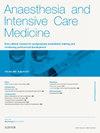Rehabilitation and quality of life transformation: specialist physiotherapy in management of chronic pain
IF 0.3
Q4 ANESTHESIOLOGY
引用次数: 0
Abstract
Physiotherapy is one of the lesser understood but an integral part of chronic pain (CP) management. The complex nature of CP warrants a multidisciplinary approach, addressing the biopsychosocial (BPS) aspects of well-being. This often requires a team of several specialists to assess the burden of individual BPS domains and devise a tailored management programme. Physiotherapy management is based on 3Es – Educate, Empower and Exercise/Movement Interventions. Fear of causing further harm, disability and anxious/low mood associated with it are a common presentation among those living with CP. Rebuilding patient confidence, reducing fear of movement and restoring function are the objectives of physiotherapy in CP. This is accomplished using several ‘tools’ as a part of psychologically informed physiotherapy (PIPT) practice. PIPT includes – cognitive behavioural physical therapy (CBPT), graded exposure/activity, psychomotor physical activity, physiotherapy-related acceptance and commitment therapy (PACT) and group-based physiotherapy-led behavioural psychological interventions (GPBPIs). PIPT along with education about CP, input like activity pacing and relaxation aids to shift the patient mindset from that of fear avoidance to confident and informed motivation to move again. Movement and exercise are known to improve quality of life in this population and help restore function along with providing sustainable self-management strategies.
康复和生活质量的转变:慢性疼痛管理的专科物理治疗
物理治疗是一个鲜为人知的慢性疼痛(CP)管理的一个组成部分。CP的复杂性质保证了一个多学科的方法,解决生物心理社会(BPS)方面的福祉。这通常需要一个由几位专家组成的小组来评估各个BPS领域的负担,并制定一个量身定制的管理方案。物理治疗管理是基于3e -教育,授权和运动/运动干预。害怕造成进一步的伤害、残疾和与之相关的焦虑/情绪低落是CP患者的常见表现。重建患者信心、减少对运动的恐惧和恢复功能是CP物理治疗的目标。这是使用几个“工具”作为心理信息物理治疗(PIPT)实践的一部分来实现的。PIPT包括认知行为物理治疗(CBPT),分级暴露/活动,精神运动物理活动,物理治疗相关的接受和承诺治疗(PACT)和基于群体的物理治疗主导的行为心理干预(GPBPIs)。PIPT加上CP的教育,活动节奏和放松等输入有助于将患者的心态从恐惧逃避转变为自信和知情的动机。众所周知,运动和锻炼可以改善这一人群的生活质量,帮助恢复功能,并提供可持续的自我管理策略。
本文章由计算机程序翻译,如有差异,请以英文原文为准。
求助全文
约1分钟内获得全文
求助全文
来源期刊

Anaesthesia and Intensive Care Medicine
ANESTHESIOLOGY-
CiteScore
0.50
自引率
0.00%
发文量
152
期刊介绍:
Anaesthesia and Intensive Care Medicine, an invaluable source of up-to-date information, with the curriculum of both the Primary and Final FRCA examinations covered over a three-year cycle. Published monthly this ever-updating text book will be an invaluable source for both trainee and experienced anaesthetists. The enthusiastic editorial board, under the guidance of two eminent and experienced series editors, ensures Anaesthesia and Intensive Care Medicine covers all the key topics in a comprehensive and authoritative manner. Articles now include learning objectives and eash issue features MCQs, facilitating self-directed learning and enabling readers at all levels to test their knowledge. Each issue is divided between basic scientific and clinical sections. The basic science articles include anatomy, physiology, pharmacology, physics and clinical measurement, while the clinical sections cover anaesthetic agents and techniques, assessment and perioperative management. Further sections cover audit, trials, statistics, ethical and legal medicine, and the management of acute and chronic pain.
 求助内容:
求助内容: 应助结果提醒方式:
应助结果提醒方式:


